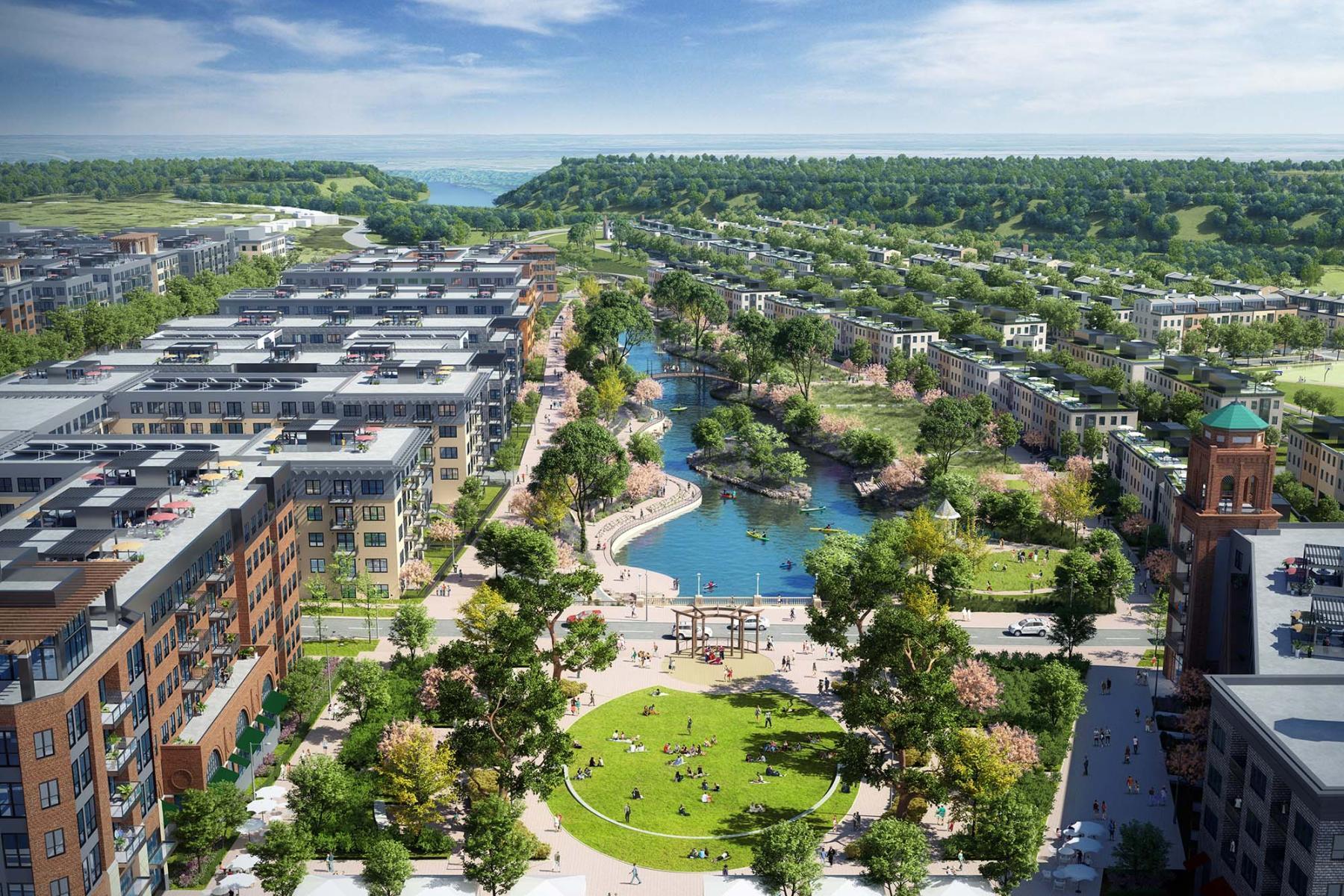3 Ways Building Design Can Improve Healthcare Worker Well-Being

A 2021 Washington Post/Kaiser Family Foundation survey of 1,327 front-line healthcare workers in the United States revealed that medical burnout has reached extremely alarming levels. An overwhelming 55% of front-line health care workers reported burnout (defined as mental and physical exhaustion from chronic workplace stress), with the highest rate (69%) among the youngest staff — those ages 18 to 29.
At the new Highland Bridge Medical Office Building (MOB) in Saint Paul, Minnesota, the design and construction teams evaluated multiple building considerations that can have a positive impact on both staff experience and patient outcomes throughout the building's core spaces (design completed) and the tenant buildouts (design in progress). They looked both inside and outside of the healthcare setting to evaluate access to amenities and resources to help improve provider and staff wellbeing within the completed facility.
Here are three special considerations the design team implemented to contribute to a positive overall impact on staff well-being—considerations that could be applied to almost any healthcare facility where physician and staff retention is imperative:
1. Create environments that encourage peer interaction and support.
It’s well documented that physician burnout can lead to lower quality of care and decreased patient satisfaction, but we also know that healthcare design, programming and site location can have an incredible impact on mitigating the challenges that come from long hours, depersonalization and emotional exhaustion.
Providing on-site amenities that can be easily used by providers and staff during the workday is a critical foundation to support health and wellbeing. Creating areas of refuge and encouraging gathering within the office environment can go a long way in promoting a sense of community and increasing engagement between providers and staff. For example, within a multi-tenant space like the Highland Bridge MOB, dedicated wellness rooms or tea and snack stations will be placed within an individual tenant space, while welcoming lobby and seating areas throughout the facility can help promote integration and build a sense of community for providers and spaces to naturally gather in. At the Highland Bridge MOB, a shared lobby welcomes staff, patients and visitors. Within one tenant’s 26,000-square-foot space, a welcoming waiting area features gathering configurations that range from small-group to individual working stations. Breakroom and offices feature large windows and views to the adjacent park, offering a comfortable area to gather and refresh.
2. Provide access to nature.
“Biophilia” is the innate human drive to connect with nature and other living beings. Design considerations with this concept in mind have been shown to enhance wellbeing for physicians and staff working in a variety of care environments.
This can take many forms: purposeful daylight integration, a building footprint that allows for greater access to views of the surrounding parks and nature and the use of nature-inspired artwork or graphics. Biophilic elements are small but incredibly impactful interventions that can positively impact staff satisfaction in any space. Strategically designed on a thin floorplate, the Highland Bridge MOB has increased access to daylight on every floor and intentionally enhanced views of the site’s adjacent park and walking paths. By incorporating these design practices into the building, we are helping to create a healthier, more productive environment for all who work and visit there.
3. Provide a sense of connection.
By nature of being physically embedded in a neighborhood, the development of this building reduces a sense of isolation and fosters camaraderie and connection among the physicians, staff, and surrounding community. A healthcare facility located on a site that has thoughtful inclusion of the community context can help amplify a focus on holistic wellbeing of both the patient and provider. Additionally, healthcare sites planned within high-density, urban areas help enhance access to and encourage the use of walking, biking, and transit along with providing a convenient location for patients to access care and possibly limit the commute for providers and staff.
The connectivity and thoughtfulness of the overall development surrounding the medical office building will be a major key to success. Providers and staff are just steps away from four large parks, intersected by walking and bike paths, with a total of over 55 acres of parks, open spaces, and waterways within the 122-acre Highland Bridge development. In addition, the MOB site provides convenient access to all other features of Highland Bridge (like retail, entertainment, and housing) and will be built according to the City of Saint Paul’s sustainable building standards, receiving LEED Silver certification and further meeting Sustainable Building 2030 (SB2030) Energy Standards. Once completed, Highland Bridge will be a shining example of development with a focus on wellness and positive community impact.
Conclusion
Considering healthcare worker well-being is a critical component to creating successful healthcare environments. As the impact of the COVID-19 pandemic continues, it is important to consider the health of the building occupants, the surrounding community, and the environment when designing new buildings, especially in healthcare, where physician burnout and staff turnover are major concerns. By designing buildings that facilitate users’ access to nature, encourage peer interaction, and enhance connection to the local community, designers and architects can help combat burn-out and foster productive and engaged teams in the much-needed healthcare industry.
Learn more about how Ryan’s multi-disciplinary healthcare real estate team creates places for people to thrive.